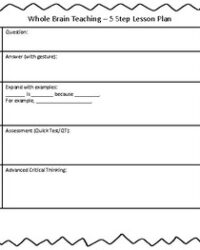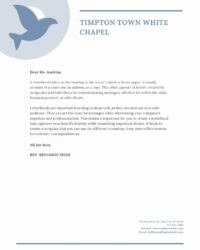Stepping into the world of modern science education can feel like navigating a whole new galaxy, especially when you hear terms like “Next Generation Science Standards.” These standards have fundamentally reshaped how we teach and how students learn science, moving from rote memorization to deep understanding and application. If you are an educator, you know that effective planning is the bedrock of successful teaching, and that is precisely where a well-designed lesson plan template comes into play. It is not just about ticking boxes; it is about creating dynamic, student-centered learning experiences.
Gone are the days of simply lecturing from a textbook. Today’s classrooms thrive on inquiry-based learning, hands-on investigations, and real-world problem-solving. This shift demands a different approach to lesson design, one that integrates scientific practices, disciplinary core ideas, and crosscutting concepts seamlessly. So, if you are looking to truly transform your science lessons and empower your students to think like scientists and engineers, understanding and utilizing a robust template is your next essential step.
Understanding the Core of NGSS-Aligned Planning
The Next Generation Science Standards represent a significant paradigm shift in K-12 science education. They move away from content recall in isolation and instead focus on what students should be able to do with science knowledge. This means lessons are no longer just about delivering information but about creating opportunities for students to engage in the practices of science and engineering, making sense of phenomena or designing solutions to problems. It is a more active, discovery-oriented approach that genuinely prepares students for a complex, scientific world.
When you start thinking about building a next generation science standards lesson plan template, you are really diving into the heart of this educational philosophy. It is about crafting a framework that guides you in weaving together the three crucial dimensions of the NGSS, ensuring that your students are not just learning facts but are actually applying scientific thinking. This integration is what makes an NGSS lesson so powerful and different from traditional approaches. It encourages a deeper, more conceptual understanding rather than surface-level memorization.
Key Components of an Effective NGSS Lesson
At the heart of every effective NGSS lesson are its three interconnected dimensions. These are not separate elements to be taught individually but rather woven together in every lesson. Understanding how they interact is fundamental to developing meaningful learning experiences. Students should be actively using these dimensions to explore phenomena or solve problems, making connections as they learn.
- Science and Engineering Practices (SEPs): These describe the behaviors that scientists engage in as they investigate and build models and theories about the natural world and the key set of engineering practices that engineers use as they design and build systems. Examples include planning and carrying out investigations, analyzing and interpreting data, and constructing explanations.
- Disciplinary Core Ideas (DCIs): These are the key organizing concepts of science that have broad importance within or across multiple science or engineering disciplines. They include concepts in Physical Sciences, Life Sciences, Earth and Space Sciences, and Engineering, Technology, and Applications of Science.
- Crosscutting Concepts (CCCs): These are concepts that bridge different domains of science, providing an organizational framework for connecting knowledge from various disciplines. Examples include cause and effect, patterns, systems and system models, and energy and matter.
Designing for Student Engagement
Beyond integrating the three dimensions, an effective NGSS lesson plan template emphasizes student engagement and inquiry. This means designing lessons where students are asking questions, investigating, and making sense of the world around them, rather than passively receiving information. You want to create a learning environment where students are motivated by curiosity and the challenge of figuring things out for themselves. It is about fostering a sense of scientific wonder and encouraging critical thinking from the very beginning of the lesson.
To truly bring an NGSS lesson to life, think about how you can incorporate real-world phenomena or engineering challenges. When students can see the relevance of what they are learning to their own lives or to global issues, their motivation and engagement skyrocket. This approach moves learning beyond the classroom walls and into meaningful contexts, making the science relevant and memorable. It is about empowering students to apply their knowledge and skills to solve authentic problems.
Practical Steps to Building Your NGSS Lesson
Now that we have explored the foundational elements, let us talk about the practical side of constructing your lessons using an NGSS framework. It might seem daunting at first, but by breaking it down into manageable steps, you will find it becomes a much clearer process. The goal is to move from simply covering content to genuinely uncovering understanding and fostering scientific literacy in your students. Think of your template as a blueprint for this investigative journey.
Developing an NGSS lesson is a cyclical process, often starting with a compelling phenomenon or problem that sparks student curiosity. This phenomenon serves as the anchor for the entire lesson or unit, providing a real-world context for learning. From there, you will strategically plan how students will use the three dimensions to explain that phenomenon or solve that problem. It is about creating a coherent storyline that guides students through their learning, allowing them to build understanding progressively.
- Identify Performance Expectations (PEs): Start by unpacking the specific Performance Expectations you aim to achieve. These combine elements from the three dimensions and describe what students should be able to do at the end of the instruction.
- Unpack the Three Dimensions: Deeply understand the SEPs, DCIs, and CCCs embedded within your chosen PEs. Consider what each means for student learning and how they will interact.
- Develop a Storyline: Craft a coherent sequence of lessons that builds student understanding incrementally. Each lesson should contribute to explaining a larger phenomenon or solving a complex problem.
- Choose Engaging Activities: Select activities that allow students to actively engage with the phenomena using the SEPs and CCCs to develop and apply the DCIs. Think hands-on investigations, data analysis, modeling, and argumentation.
- Plan for Assessment: Design formative and summative assessments that genuinely measure student proficiency across all three dimensions, not just factual recall. Consider how students will demonstrate their ability to apply what they have learned.
Remember that this process is iterative. You might design a lesson, implement it, and then reflect on what worked well and what could be improved. The best lesson plan templates are flexible enough to accommodate these adjustments, allowing you to refine your approach based on student needs and responses. It is about continuous improvement and adapting your teaching to truly meet the vision of the NGSS.
Embracing the Next Generation Science Standards means embracing a more dynamic, engaging, and ultimately more effective way of teaching science. It is about empowering students to become active participants in their learning, to question, explore, and discover the world around them with the critical thinking skills of scientists and engineers. While crafting these lessons might require a different mindset than traditional teaching, the rewards in terms of student understanding and excitement are immeasurable.
By utilizing a thoughtful framework, you are not just planning lessons; you are cultivating a generation of critical thinkers, problem-solvers, and innovators. The investment in designing and implementing these inquiry-based experiences will undoubtedly pay dividends in fostering a deep and lasting appreciation for science in your students. It is an exciting journey to embark on, and with the right tools, you will be well-equipped to lead your students to scientific literacy.


